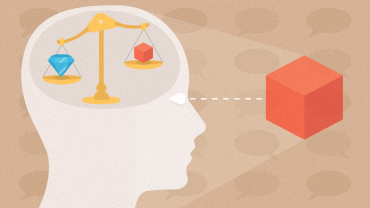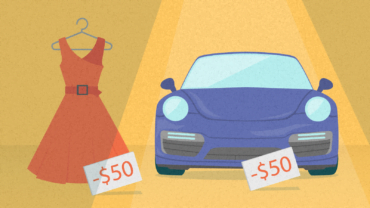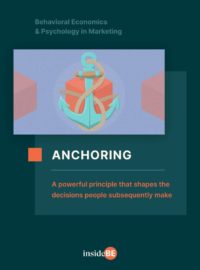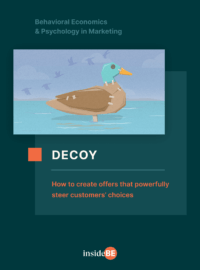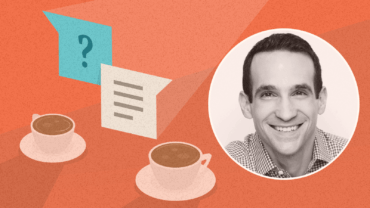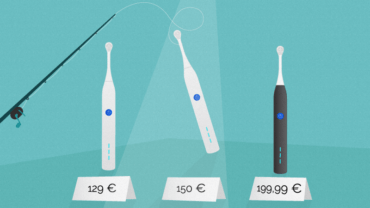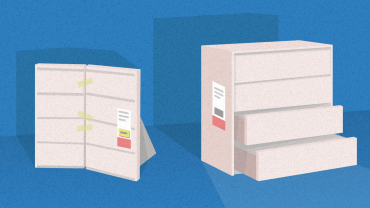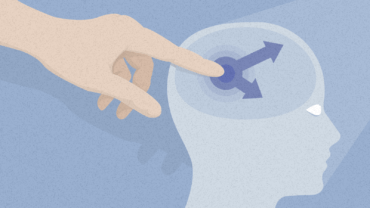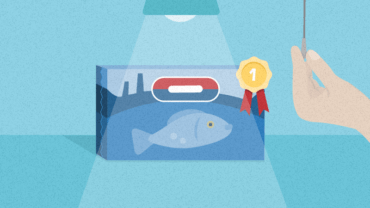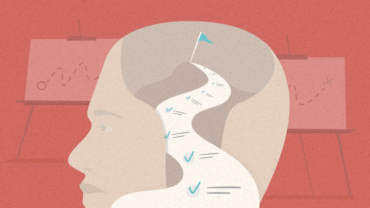The Psychology of Pricing: Hidden Factors Affecting Your Customers’ Buying Decisions
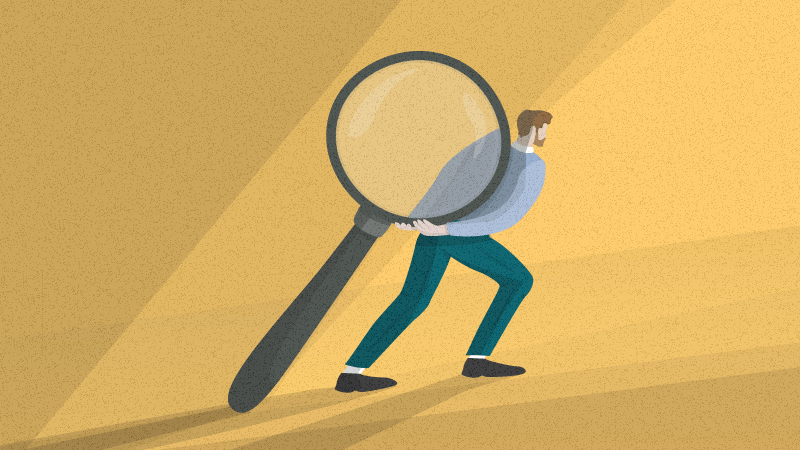
It seems like the price of a product is decided almost purely on a financial basis. But what if that weren’t the case? The psychology of pricing plays a surprisingly important role. Learn how to unlock it below.
Article content:
Let’s play a game of The Price is Right. How much do you think an ordinary, 2-slice toaster costs? Go on, give us your best shot.
Now most of you probably guessed around $20-25, which is right in the ballpark. But some of you might’ve guessed as high as $60, or maybe even as low as $15.

Discover ground-breaking ideas and fascinating solutions.
But how did you arrive to these conclusions? How did that number pop up in your head? Well, you might not even realize it, but there are many factors that influence how you and your customers determine how much an item is worth.
How people try to determine value
The root to deciding how much something is worth, or how much you’re willing to pay for it, lies in value.
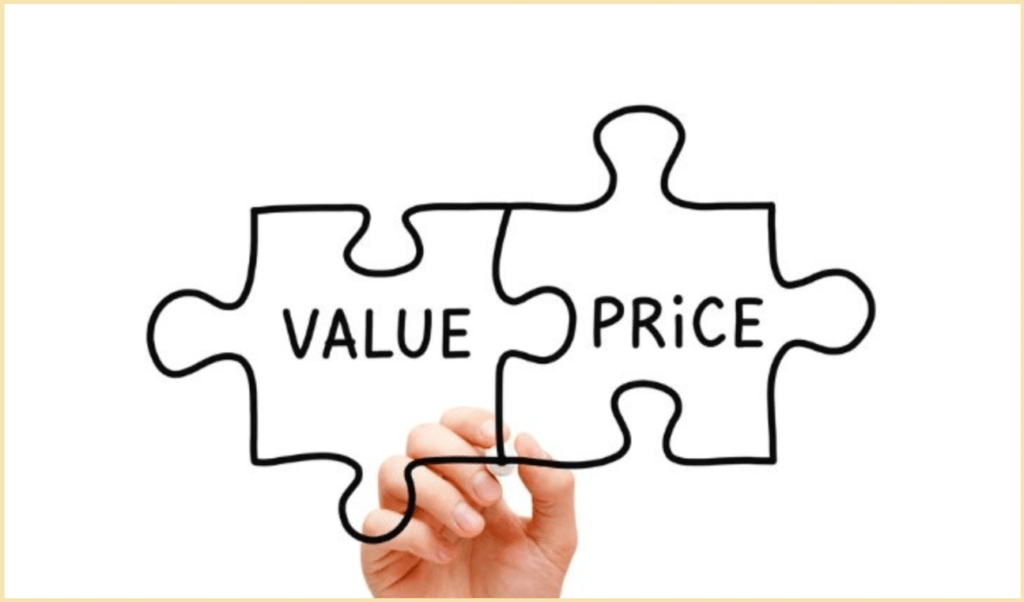
Source: LinkedIn
Value can be defined as “the importance, worth, or usefulness of something.” Pretty straightforward, eh?
In reality, determining value is not that simple. As humans, it’s very hard for us to determine the objective value of something.
For example, take a university-branded sweatshirt. How do you assess its value?

Source: LSE shop
There are many ways you could perceive its value. Let’s take a look at some of the main ones.
Exchange value
You could start off by considering how much you could sell it for. Simply check eBay or Amazon and see what most people are asking for it.
This is known as exchange value. It’s the equivalent value that something can be exchanged for, and more often than not, this is reflected in its market price.
Exchange value is the equivalent value that something can be exchanged for, and more often than not, this is reflected in its market price.
Use value
Okay, and what about the sweatshirt’s usability? Here, you’re starting to think of its use value – or rather, the benefits derived from using the item. Essentially, what needs of yours does the sweatshirt fulfill?
It’s a sweatshirt, so at its base level, it’ll protect your torso and arms from the outside world. It’ll keep you warm on a cold day. Maybe it even matches your fashion-sense and meets your stylistic needs.
Symbolic value
But what about the sweatshirt’s sentimental value? For someone who went to the university depicted in the design, the sweatshirt would have much more meaning linked to it than for someone who’s never even heard of the university before.
This is called symbolic value, or the immaterial meanings that consumers attach to an item.
A good example of this is a cherished gift from a loved one. Although its exchange value may be low, the sentimental attachment to it makes it increase in symbolic value.
Time + effort = value
Fairness
People’s tendency to use time and effort as a way of determining the value of a product or service and the fairness of its price. People can’t evaluate the intrinsic quality of what they’re getting, that’s why they use time and effort as a reliable proxy.
Finally, what about the labor that has gone into producing the sweatshirt? If it was simply mass-produced and printed in a matter of minutes, it would be worth a lot less than if it were laboriously hand-stitched by a talented seamstress.
Even if the end result has the same quality, it would feel wrong to pay the same amount for the mass-produced one as the hand-made one.
This is because we tend to seek fairness; if something took a lot of time and effort to make, we want to reciprocate this by reimbursing the supplier for it. The reverse is also true – we’re unwilling to pay as much for things that require less time or effort because it doesn’t feel like a fair exchange.
The importance of context
It’s impossible for us to determine value in isolation. Every time we make a decision on the worth of something, we rely on context clues and comparisons to make that judgment call.
You might be thinking: “Well, what about the toaster? I just came up with a number and I didn’t need any context!”
But you did use context: internal context. You likely used an internal reference price; a memory of past prices that you’ve seen or paid, in this case – that of a toaster or other similar household goods such as kettles or blenders.
Reference prices aren’t just internal. In any shopping experience, whether in-store or online, a consumer is exposed to the prices of many other objects. This creates an external reference price, which they also use to compare the price of the object they’re considering purchasing.
These reference prices are important, as they influence how fair consumers judge the price to be. If they find the price to be unfair, they’ll avoid buying the item at that price. If the price is found to be fair: bingo! They’re highly likely to fork over the cash.
The factors affecting these value judgments
As useful as these context clues can be for making quick purchasing decisions, they leave us prone to making systematic errors, such as the anchoring effect, decoy effect, IKEA effect, and the price-quality heuristic.
The anchoring effect
Perhaps the most well-known error is the anchoring effect, or anchoring bias. This is people’s tendency to rely too heavily on the first piece of information they’re presented with and use that as their reference point.
Anchoring
People’s tendency to rely and base their decisions on the first piece of information (often number) offered. The anchor creates a reference point to which people compare other prices.
In the case of pricing – this reference point becomes, you guessed it, their reference price. A very sticky reference price at that.
By sticking too strongly to the first price they see, people will vastly over- or under-estimate the value of an item, making them prone to over-paying or passing up on a good deal.
An example of anchoring bias you may have come across is shopping for a new jacket. Imagine it: you walk into the store, and the first jacket you see is $70. Pricey! You keep walking, and the next one you see is only $40. Now that’s a good deal, so you decide to get it.
But what if the first jacket you saw was $30? Now that second $40 jacket looks nowhere near as appealing anymore. All because you were anchored to the first price.
The decoy effect
Similarly, consumers get thrown off by other options presented at the same time. Imagine buying popcorn at the movies. You see they have a small size for $4, a medium for $7.50, and a large for $8.
The decoy effect
Decoy is an option which no one is interested in because it’s objectively inferior to other options. It isn’t designed to be sold. Decoy has a different objective – to make other options seem more attractive.
Looking at these options, it’s a no-brainer – of course you’re gonna get the large (even if you know you’ll never finish it) because it’s the best deal.
But imagine if the medium size wasn’t there. The large is x2 the price of the small. Now it doesn’t feel like such a good deal anymore…
This is known as the decoy effect. This is where in a choice between alternatives, the addition of a less attractive option (which is blatantly less attractive than one, and only slightly less attractive than another) affects the perception of the original alternatives.
The IKEA effect
We also tend to overvalue items that we’re involved in making ourselves. This is called the IKEA effect.
The IKEA effect
When people put effort into something, it becomes more valuable to them than its objective value. Make your customers contribute or at least give them the feeling they contributed.
Much like how you like your ERSNÄS sideboard cabinet even more after having built it yourself, we ascribe more value to products that we were actively involved in making or worked for.
For example, you value your home-cooked pasta carbonara much more than the $2 you spent on the ingredients for it. You also value that pair of customized Nike sneakers much more than they’re actually worth on the market. Why? Because you made them what they are.
The Price-Quality Heuristic
Finally, there’s the price-quality heuristic. A common mistake we tend to make is to assume that higher prices mean higher quality.
Yes, in some cases this is true, after all – better materials and capital are often more expensive, but this relationship doesn’t always hold. In fact, some estimates claim the correlation between objective quality and price is as low as 0.27!
Because of this, we tend to draw assumptions about items based purely on their price. If the price is lower than our reference price, we assume it’s lower quality, and vice versa for a higher price.
The reverse is also true – when we perceive something as high-quality, be it due to good stitching, store atmosphere, or brand, we adjust our reference price upwards to match the inferred quality. Equally, when something is inferred to have a lower quality, the value – and with it, our willingness to pay for that item – decreases.
When is price more or less important in the purchasing decision process?
So we’ve understood that there are many factors in determining value and these influence consumers’ willingness to pay. But when is this willingness to pay more or less lenient when it comes to price?
Different types of customers
Price matters more: to price-sensitive consumers.
Some consumers consider price as a more important factor than others. These are known as price-sensitive consumers.
These are people that will weigh more of their judgment on the price of the item than on other factors, and are therefore more likely to fall for the price-quality heuristic, anchoring, and decoy effect.
Habit Buying
Price matters less: when habit buying.
There are certain categories of goods where people just choose the same brand again and again. This act of not switching brands (or items within a category) is known as habit buying.
When a product is consistently bought out of habit, it’s unlikely that a price change will trigger a change in behavior.
As we know from behavioral science, habits are powerful drivers of behavior. So when a product is consistently bought out of habit, it’s unlikely that a price change will trigger a change in behavior.
The types of items that are more likely to be habit-bought (and therefore less sensitive to pricing) are low-involvement items. These are goods that don’t require a lot of thought or searching, such as toothpastes, toilet paper, and rice.
Brand Loyalty
Price matters less: when brand loyalty is high.
Quite intuitively, consumers who are attached to a brand will also be less sensitive to the price of the brand.
This is because their preference for the brand’s attributes, e.g. logos, colors, and brand personality, outweighs the importance of price. Because of this, they’ll choose the brand most of the time, regardless of price.
Conspicuous Consumption
Price matters more: when showing off.
In the case of conspicuous consumption – when people buy luxury items to display their wealth to others – price becomes very important.
This is because the higher the price, the higher the social status associated with it, so people are driven to purchase it.
This is known as the Veblen effect, where demand for an item increases as the price of it increases. In fact, this is so common in the luxury market that there’s even a name for the items that inspire this reaction to price: Veblen goods.
Responsible Buying
Price matters less: when buying responsibly.
When it comes to shopping responsibly, price can matter less. This is because, often, consumers are willing to pay a price premium for more ethically or sustainably sourced goods.
This is because some consumers may feel responsible towards society and express these feelings by means of their purchasing behavior.
Studies show that this price premium can range from 10% to 29.5%, depending on the type of item. Additionally, the willingness to pay more for more ‘responsible’ goods varies across cultures.
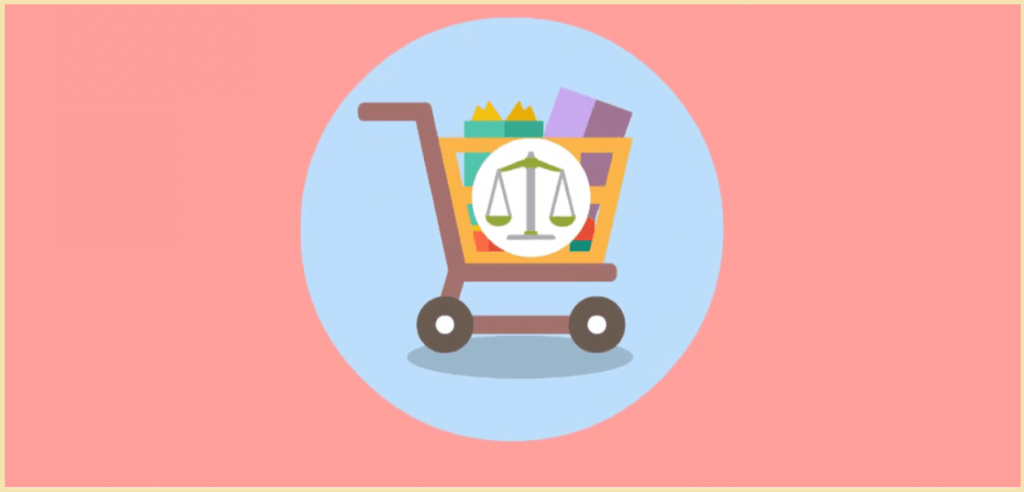
Source: Elevate Learning
How to use the psychology of pricing in business
You’re probably wondering now how you can use all this knowledge of pricing psychology to your advantage? Well, look no further.
1. Use price anchoring
By adjusting the consumer’s external reference price, you can increase their willingness to pay for your goods.
Simply display a higher price linked to the item or category you’re trying to sell before you reveal the actual price.
Simply display a higher price linked to the item or category you’re trying to sell before you reveal the actual price.
In practice, this could mean:
- Displaying a high ‘initial’ price and a lower ‘discount’ price
- Showing a comparison with other, more expensive, similar items
- Showing a comparison with competitor prices (just make sure they’re higher!)
- When selling multipacks or package deals, compare the individual per-unit price with the wholesale per-unit price
2. Use decoys
Similar to using price anchoring, using the decoy effect involves adding another price into the mix.
This is the best strategy to use when you want to boost sales of a ‘premium’ offering. All you need to do is create a mid-range offering that is priced almost the same as your ‘premium’ offering, but is clearly inferior to the ‘premium’ offering.
For example, let’s say you sell ice cream in a cute ice cream parlor. Your most popular item is the $5 bowl, which has 2 delicious scoops of various flavored ice-creams with a topping of choice. But the product you want people to be buying (after all, it gives you the largest profit margin) is the $9 Supreme Sundae, which is 3 scoops of ice cream with 4 toppings of choice AND a toasted Belgian waffle on the side.
To boost sales of the Supreme Sundae, just introduce another product: the Not-So-Supreme Sundae (just don’t name it that). This would be something like 3 scoops of ice cream with 2 toppings of choice. If you price it at $8, customers would look at it and instantly compare it to the $9 Supreme Sundae. $1 difference for 2 extra toppings AND a whole Belgian waffle? The Supreme Sundae is a steal!
3. Involve your customers in the process
This is a tactic you can use to leverage the IKEA effect. By offering a product that requires customers to put some elbow grease into producing it, you’ll only be adding more value to the product and they’ll be willing to pay more for it.
Of course, not everyone’s products can be as easily deconstructed and sold as flat-pack furniture, but the crux of the principle lies in this simple addition of involvement and manual labor – however, it’s important for customers to feel that their hard work will pay off.
For B2C, including simple tasks and activities in the buying process will mean the customer feels like they’re playing an active role. This will keep them engaged and more likely to stick around (aided by the sunk cost fallacy).
This can be things like:
- Letting consumers compare products with filters and tables
- Having them provide their body measurements to get clothing that’s more likely to fit them
- Providing earned discounts
For B2B, get clients involved in the design process. The more they feel that their input has been appreciated, the higher they’ll value the final output. After all, they were part of that output, so how could they hate it?
The more they feel that their input has been appreciated, the higher they’ll value the final output.
4. Highlight your product’s central value
Finally, as we now know, value is key to a customer’s willingness to pay. It’s crucial for making the price feel fair and converting “window shoppers” into customers.
Find your product’s most pertinent values. These will most likely be values of use (how your product fulfills the consumer’s various needs) but could also be symbolic values (the psychological meanings that are attached to the product – think sentimental value, status, personal identities, etc.).
Highlight these values in all your marketing communications. This can be through emotive advertising or rich product descriptions.
Complement this by drawing attention to the time and effort put into the creation of this value. This will justify your pricing to the consumer, making the exchange of their money for your meticulously designed product feel fair.
Key Takeaways:
- How much consumers are willing to pay for an item is based on the value they place on it.
- Determining value is hard, so people use context clues and comparisons, such as reference prices.
- The use of context clues and comparisons makes consumers vulnerable to value judgment mistakes, such as: anchoring bias, the decoy effect, the IKEA effect, and the price-quality heuristic.
- Businesses can leverage these mistakes by anchoring consumers to a price, using decoys, involving their customers in the purchasing process, and providing a central value.
- In some contexts, such as habit buying, high brand loyalty, and responsible buying, price matters less in the purchasing decision process.

